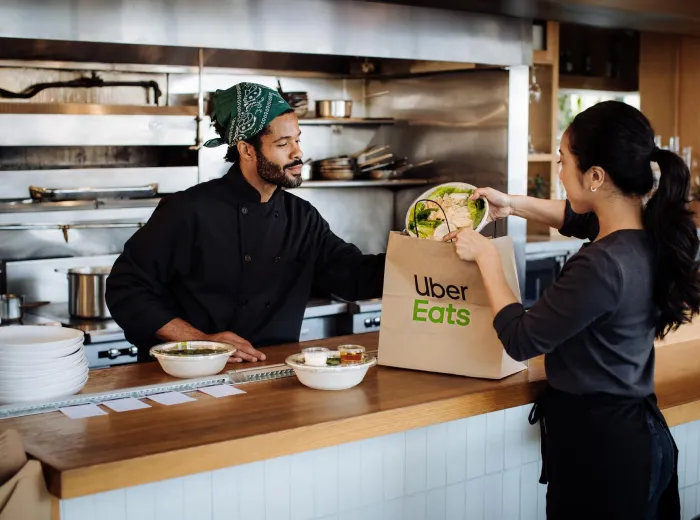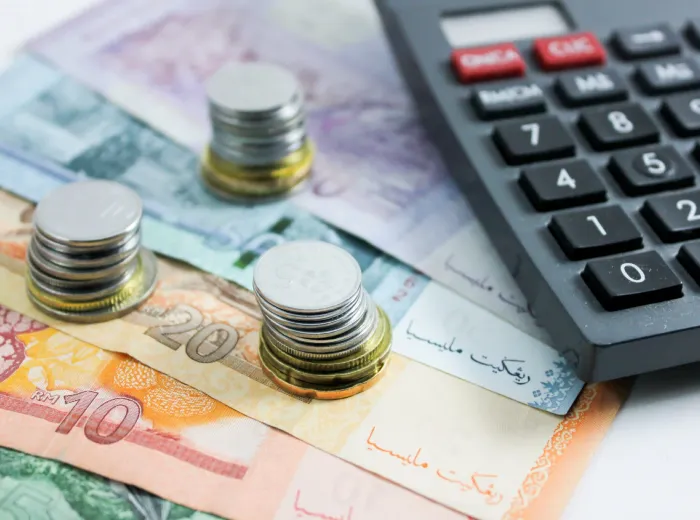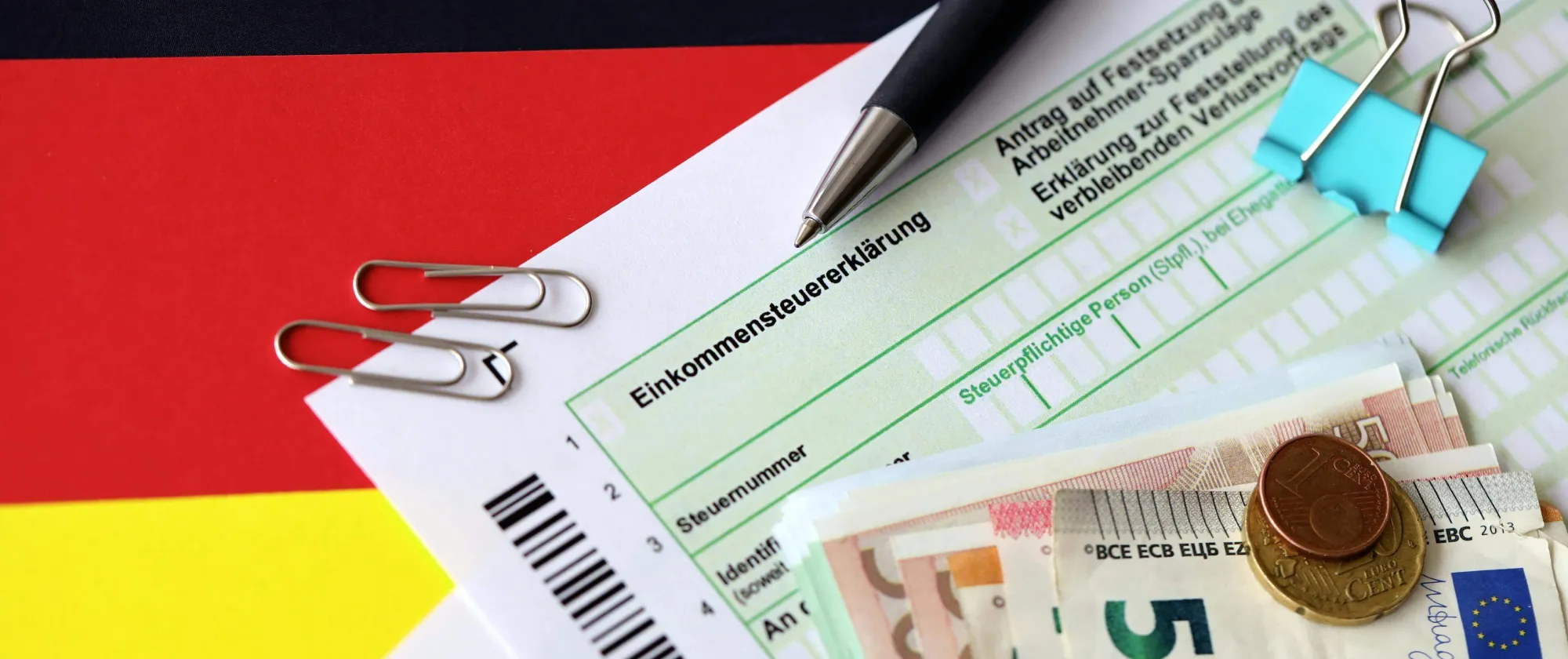
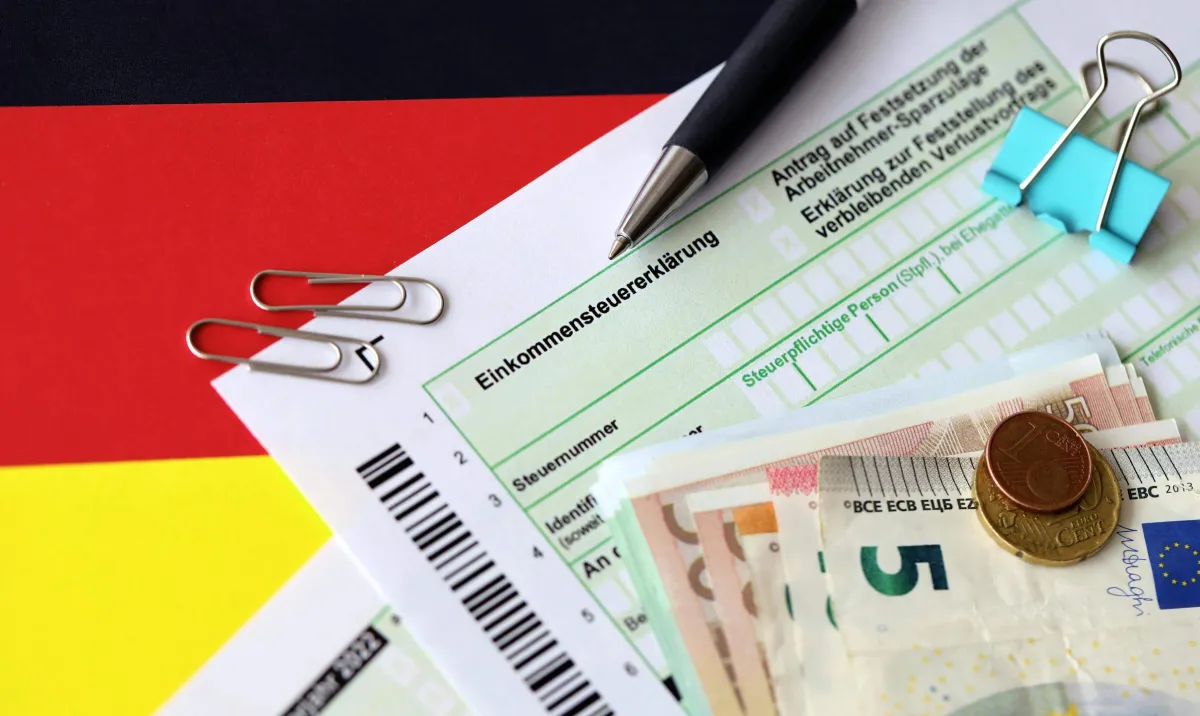
What are The Current VAT Rates for Restaurants in Germany?
Running a restaurant in Germany means juggling countless responsibilities — from managing staff and sourcing quality ingredients to creating memorable guest experiences. But one area that can quietly make or break your bottom line is VAT (Value Added Tax). Whether you’re pricing your menu, choosing a POS system, or filing your monthly returns, understanding how VAT works is not optional — it’s essential.
In Germany, VAT is charged at different rates depending on what you sell and how you sell it. While some items — like alcohol — are always taxed at the full rate, others — like meals served on-site — might be eligible for a reduced rate. The distinctions can get confusing fast, especially with recent changes introduced during and after the COVID-19 pandemic.
This guide is designed for restaurant, café, and food service business owners who want to stay compliant and protect their profit margins. We’ll break down:
- The current VAT rates that apply to restaurants
- What’s taxed at 7% vs. 19%
- How to register and file your VAT returns correctly
- Real-world examples and compliance tips
- Common pitfalls — and how to avoid them
Let’s take the complexity out of VAT, so you can focus on growing a successful hospitality business in Germany.
Why VAT Matters for Restaurant Owners
VAT might feel like just another line item on your invoice — but it plays a far bigger role in your business operations. From menu pricing and purchasing decisions to the way you report income, VAT has a direct impact on your restaurant’s profitability and legal standing. Understanding the basics can help you avoid costly mistakes and make smarter day-to-day decisions.
VAT isn’t just a tax—it’s a margin factor
Many restaurant owners overlook how VAT subtly reduces their effective profit per item. If you price a dish at €20, you’re not pocketing all of that — a portion goes straight to the tax office. Whether you apply the 7% or 19% VAT rate, it cuts into your margin unless you’ve accounted for it in your pricing strategy.
Why it matters:
- Incorrect pricing can result in absorbing VAT out of your own profit.
- Overpricing to “cover VAT” may push your prices above market expectation.
- Applying the wrong VAT rate can trigger audits and penalties.
Smart restaurateurs treat VAT as part of their cost model, not an afterthought.
Who needs to register for VAT in Germany?
If you’re generating revenue through food or drink sales, chances are you’re legally obligated to register for VAT — especially once you cross the €22,000 annual turnover threshold. Whether you’re running a small bistro or a multi-unit franchise, VAT registration ensures you’re operating within the law.
Key scenarios requiring registration:
- Running a restaurant, café, or bar with annual turnover above €22,000
- Offering catering services or food delivery
- Selling taxable merchandise, such as bottled beverages or branded items
VAT registration isn’t optional once you’re over the limit — and the authorities do check.
Thresholds and exceptions you need to know
Germany provides some relief for smaller businesses under the Kleinunternehmerregelung (Small Business Rule). If your turnover was under €22,000 last year and won’t exceed €50,000 this year, you may be exempt from charging VAT. However, this also means you can’t reclaim input tax (Vorsteuer) on your own purchases.
What to consider:
- Opting in or out of VAT registration has long-term financial implications.
- Many restaurant owners voluntarily register to recover input tax on equipment and supplies.
- Once you register, you’re committed to filing returns — even if you make no sales.
Knowing where you stand helps you make a decision that aligns with your growth strategy.
VAT isn’t just about ticking a legal box — it’s about understanding how taxation interacts with your operations, pricing, and financial planning. Get this right from the start, and it will save you from major headaches later.
Current VAT Rates Applied to Restaurants
Navigating VAT rates in the German hospitality sector can be complex. The applicable rate—either 7% or 19%—depends on factors such as the type of item sold, the mode of service (dine-in or takeaway), and specific ingredients. As of January 1, 2024, the standard VAT rate of 19% has been reinstated for food served in restaurants, ending the temporary 7% rate that was in place during the COVID-19 pandemic.
The Standard Rate (19%) — When It Applies
The 19% VAT rate is the default for most goods and services in Germany, including:
- Alcoholic beverages: All types, regardless of where they’re consumed.
- Restaurant and catering services: Food consumed on-premises, as it includes additional services like seating and tableware.
- Luxury food items: Such as lobster, caviar, and high-priced meats.
This rate also applies to beverages, with few exceptions.
The Reduced Rate (7%) — Where Restaurants Benefit
The 7% VAT rate is designated for essential goods, which includes:
- Takeaway food: Items sold for off-premises consumption, without additional services.
- Basic foodstuffs: Such as bread, milk, fruits, and vegetables.
- Certain beverages: Like still water and milk-based drinks with a high milk content.
It’s important to note that the reduced rate does not apply to food consumed on-site in restaurants, as the service component elevates the VAT to 19%.
Delivery vs. Dine-In — Why the VAT May Differ
The mode of service affects the VAT rate:
- Dine-in services: Subject to 19% VAT due to the inclusion of services like seating and tableware.
- Takeaway and delivery: Generally subject to 7% VAT, provided no additional services are offered.
For example, a pizza delivered to a customer’s home would typically incur 7% VAT, while the same pizza eaten in the restaurant would be taxed at 19%.
Recent Changes and Temporary VAT Relief
In response to the COVID-19 pandemic, Germany temporarily reduced the VAT rate for restaurant and catering services from 19% to 7% starting July 1, 2020. This measure was extended multiple times but concluded on December 31, 2023. As of January 1, 2024, the standard 19% VAT rate has been reinstated for these services.
Looking ahead, the German government has announced plans to reintroduce the reduced 7% VAT rate for food services in the hospitality sector starting January 1, 2026.
Understanding these VAT distinctions is crucial for restaurant owners to ensure compliance and optimize pricing strategies.
VAT on Alcohol, Beverages, and Special Items
While many restaurateurs focus on the VAT applied to food, it’s just as important to understand how drinks and other non-standard offerings are taxed. Alcoholic beverages, soft drinks, and extras like service charges can carry different VAT rates, and misapplying them could trigger audits or lead to lost revenue. Here’s how to stay on the right side of the law when it comes to drinks and specialty items.
Alcohol is taxed at 19% — no exceptions
Whether you serve a glass of wine with dinner or a cocktail at your bar, all alcoholic beverages in Germany are subject to the full 19% VAT rate, regardless of whether they are consumed on-site or taken away.
Key considerations:
- Applies to beer, wine, spirits, mixed drinks, and liqueurs.
- Applies in both dine-in and takeaway scenarios.
- Alcohol must be listed separately on receipts with the correct rate applied.
Even during the COVID-19 VAT relief period, alcohol was explicitly excluded from the reduced 7% rate. This hasn’t changed, and likely won’t in future relief programs either.
What about bottled drinks and coffee to-go?
Non-alcoholic beverages are a little trickier, and the VAT treatment can change depending on how the drink is sold.
Here’s a breakdown:
| Beverage Type | VAT Rate | Notes |
|---|---|---|
| Bottled soft drinks | 19% | Sold as a “good” not a “meal component” |
| Water (sparkling or still) | 19% | Applies to both bottled and tap water sold |
| Milk-based drinks (to-go) | 7% | Must contain a high milk content |
| Fresh fruit juice (to-go) | 7% | Only if no added services and consumed off-site |
| Coffee to-go | 7% | Applies only if taken away, with no table service |
| Coffee consumed on-site | 19% | Includes service component, taxed as a full meal |
VAT is driven not just by what’s in the drink, but how and where it’s consumed.
Tips, cover charges, and service fees
Service-related charges can be easy to overlook—but they matter for VAT purposes.
- Voluntary tips given directly to staff are not subject to VAT.
- Mandatory service charges (e.g., listed as a percentage on the bill) are subject to 19% VAT.
- Cover charges (e.g., per-person fees for bread or entertainment) are also taxed at 19%.
- Table reservations with a separate booking fee? That fee carries the standard 19% VAT rate.
Rule of thumb:
If the customer has no choice but to pay it, it’s usually taxable at the standard rate.
By understanding how VAT applies across alcohol, drinks, and service-related extras, you’ll not only stay compliant—you’ll also avoid unpleasant surprises during audits and retain more control over your margins.
How to Register for VAT as a Restaurant in Germany
If you’re opening a restaurant, café, or any foodservice business in Germany, VAT registration isn’t just a formality — it’s a legal requirement once you exceed certain revenue thresholds. The good news is, the process is fairly structured, and with the right preparation, you can get it done without much friction.
Who must register and when
In Germany, any business that exceeds the €22,000 annual revenue threshold in the previous calendar year (and is projected to stay under €50,000 in the current year) must register for VAT unless they opt for the Kleinunternehmerregelung (small business rule). However, most restaurant operators register right away to claim back VAT on their expenses.
You must register if:
- You expect revenue over €22,000 in the current year
- You are expanding or opening a second location
- You plan to serve food or beverages regularly for a fee
- You want to reclaim input tax (Vorsteuer) on purchases and equipment
Timing Tip:
You should register before your first taxable sale, especially if you are already investing in renovations, furniture, or kitchen equipment — all of which include VAT you may want to reclaim.
How to register through the Finanzamt
VAT registration in Germany is done through your local Finanzamt (tax office), typically based on the location of your restaurant. The actual registration process is handled online via the ELSTER portal — Germany’s digital tax platform.
Steps to register:
- Visit ELSTER.de
- Create a business user account
- Fill out the “Fragebogen zur steuerlichen Erfassung” (Questionnaire for tax registration)
- Indicate that you will be conducting a business and applying for a VAT ID (USt-IdNr.)
- Submit electronically and await confirmation
You’ll then receive your Steuernummer (tax number) and, if requested, a VAT ID (USt-IdNr.), which you’ll use for invoicing and tax filings.
What documents and data you’ll need
To complete your registration, you’ll be asked for several business and financial details. Have the following ready:
- Business address and legal structure (e.g., sole proprietorship, GmbH)
- Opening date and projected start of activity
- Estimated revenue and expenses for your first year
- Bank account information for tax refunds
- Business registration certificate (Gewerbeanmeldung)
- Partnership/shareholder agreements, if applicable
For restaurants, it also helps to outline your scope of services clearly (e.g., food, drinks, catering, delivery).
Registering for VAT early allows you to reclaim input tax on your startup costs and sends a strong message that your business is operating professionally. With the ELSTER system and proper prep, the process is more streamlined than ever — just be sure to get it done before you serve your first plate.
How to Calculate VAT Correctly
Applying the right VAT rate is only half the battle. You also need to calculate VAT amounts accurately, integrate them into your pricing, and issue receipts or invoices that comply with German tax law. Whether you’re running a table-service restaurant or a takeaway counter, small mistakes in VAT calculations can quickly snowball into tax liabilities or audit risks.
How to price menu items with VAT included
In Germany, most restaurants display VAT-inclusive prices on their menus. That means the price a customer sees already includes the applicable 7% or 19% VAT.
To reverse-calculate the VAT from a gross price:
Use the formula:
Net Price = Gross Price ÷ (1 + VAT Rate)
For example:
- A burger priced at €10 (including 7% VAT)
→ Net = €10 ÷ 1.07 = €9.35
→ VAT = €0.65 - A glass of wine priced at €6 (including 19% VAT)
→ Net = €6 ÷ 1.19 = €5.04
→ VAT = €0.96
Why this matters:
- If you mistakenly treat gross prices as net, you’ll end up underpaying tax.
- Proper pricing ensures you cover your tax burden without cutting into margins.
Using multiple VAT rates on the same bill
It’s common for a single receipt to include items taxed at different VAT rates—such as 7% on food to-go and 19% on alcoholic drinks. Your POS system must clearly separate these amounts, showing:
- Item description
- Net amount
- VAT rate applied
- VAT amount
- Gross total
Example receipt breakdown:
| Item | Net (€) | VAT Rate | VAT (€) | Gross (€) |
|---|---|---|---|---|
| Takeaway sandwich | 4.67 | 7% | 0.33 | 5.00 |
| Sparkling water | 2.52 | 19% | 0.48 | 3.00 |
| Total | 8.00 |
Tip: Most modern POS systems in Germany are configured for this — but check and test regularly.
Avoiding common calculation mistakes
Even small errors can cause major headaches during tax audits. Be mindful of these common missteps:
- Rounding issues: Always round to two decimal places properly — don’t estimate.
- Incorrect rate application: E.g., mistakenly applying 7% to in-house meals or drinks.
- Mismatched receipts: Ensure printed bills match internal accounting.
- Overclaiming input VAT: Don’t deduct VAT from invoices that don’t meet legal standards.
Best practices:
- Use VAT-compliant POS software that’s certified under the German KassenSichV (Cash Register Security Ordinance).
- Run monthly VAT checks using sample receipts.
- Train your team to distinguish which items are taxed at which rate.
Getting VAT calculations right isn’t just about compliance — it’s about protecting your profitability. A clear understanding of how to structure pricing and receipts keeps you in control and audit-ready.
Filing VAT Returns as a Restaurant Business
Once you’re registered for VAT, your job isn’t done — in fact, it’s just getting started. As a restaurant operator in Germany, you must file VAT returns regularly, report your collected and paid VAT accurately, and settle any balances on time. Doing this properly ensures you stay compliant and avoid unnecessary fines or cash flow surprises.
Monthly vs. quarterly declarations
How often you file VAT returns in Germany depends on your total VAT liability in the previous year.
Filing frequency rules:
- Monthly returns
Required if your VAT liability in the previous year exceeded €7,500. - Quarterly returns
Standard for most small to mid-sized restaurants if your VAT liability was between €1,000 and €7,500. - Annual returns only
Allowed only if your VAT owed the previous year was under €1,000 — extremely rare for restaurant businesses.
New business rule:
If your restaurant is new, you’re required to file monthly for the first two calendar years, regardless of income.
How to submit via ELSTER
All VAT returns (Umsatzsteuer-Voranmeldung) must be submitted electronically through the official ELSTER platform — Germany’s digital tax filing system.
Steps to file your return:
- Go to www.elster.de
- Log into your account (you’ll need a registered certificate or login credentials)
- Select “Umsatzsteuer-Voranmeldung”
- Enter your reporting period (monthly or quarterly)
- Report:
- VAT collected from sales (Umsatzsteuer)
- VAT paid on business expenses (Vorsteuer)
- The difference to be paid or refunded
- VAT collected from sales (Umsatzsteuer)
- Submit before the 10th day of the following month (e.g., April return due by May 10)
Optional:
Apply for a permanent extension (Dauerfristverlängerung) to gain one extra month for filing — helpful during busy periods.
Input tax (Vorsteuer) — reclaiming VAT on purchases
One major benefit of VAT registration is the ability to reclaim input VAT (Vorsteuer) on business-related expenses. This includes nearly everything you purchase to run your restaurant:
- Kitchen equipment and appliances
- Renovation and construction costs
- Food and drink ingredients
- Tableware, cleaning supplies, uniforms
- Software, marketing, and digital services
To claim Vorsteuer, make sure:
- The invoice is addressed to your business
- The invoice clearly shows VAT, net and gross amounts, and the supplier’s VAT number
- You retain these documents for at least 10 years
Tip:
Even if you make no sales in a given month, you must still file a zero VAT return if you’re registered — and can still reclaim VAT on eligible purchases.
Keeping your VAT filings accurate and timely isn’t just about avoiding penalties — it also helps with cash flow management, audit readiness, and long-term trust with the Finanzamt. Once you’ve got the right system and schedule in place, it becomes a manageable part of running a financially healthy restaurant.
Special VAT Scenarios for Restaurants
Most restaurants deal with standard dine-in and takeaway orders — but not all foodservice operations fit neatly into that box. Whether you offer catering, sell branded merchandise, or operate multiple business types under one roof, these scenarios can complicate your VAT obligations. Understanding the nuances will help you avoid errors and better manage your overall tax position.
Events, catering, and food trucks
Offering food outside your physical location? VAT rules still apply, but the rate can shift depending on the format and services provided.
Here’s how VAT is usually applied:
- Catering services (on-site setup, staff, tableware):
19% VAT, since it includes a service component. - Food delivery (boxed meals, no setup):
7% VAT if no extra service is included and it’s takeaway-style. - Food trucks (standing service):
If food is consumed on-site and includes service (tables, utensils), apply 19% VAT. If customers take it away, 7% VAT may apply.
Tip:
The more service-like your offering becomes (staff, setup, heating equipment), the more likely the 19% rate applies — even if it’s off-premises.
Mixed businesses (e.g. bakery + café)
If your business operates in a hybrid format — for example, a bakery with seating, or a deli with dine-in service — you must apply different VAT rates depending on how the goods are consumed.
Example scenarios:
- A sandwich taken away = 7%
- The same sandwich eaten on-site = 19%
- Packaged bread or pastries = 7%
- Coffee served at a table = 19%, but coffee to-go = 7%
Best practices:
- Train staff to ask where the food will be consumed.
- Configure your POS to apply VAT rates based on consumption mode.
- Keep internal reports separated by transaction type for clean bookkeeping.
Selling merchandise or cooking classes
Restaurants increasingly diversify revenue by offering branded products or experiences — these also carry their own VAT rules.
VAT for merchandise:
- T-shirts, mugs, cookbooks: 19% VAT
- Packaged sauces, jams, spice mixes (for takeaway): 7% if considered basic foodstuffs; 19% if premium or gift-packaged
VAT for classes or tastings:
- Cooking workshops or wine tastings = 19%, as these are treated as “entertainment” or services
- If the class includes a meal, that portion must be split and VAT allocated accordingly (often a mix of 7% and 19%)
Important:
Your invoice or receipt must clearly separate goods and services by VAT rate.
Special VAT cases may require more precise documentation and invoicing, but they’re manageable with the right systems in place. The key is understanding what counts as a product, what counts as a service, and how the mode of delivery or consumption influences the rate. When in doubt, document thoroughly — and consult your tax advisor or local Finanzamt for clarification.
Recordkeeping and Compliance Tips
Accurate VAT recordkeeping is more than just a legal requirement — it’s your safety net in case of an audit and a tool for better financial control. German tax authorities expect restaurant businesses to maintain detailed, transparent, and well-organized documentation, especially because of the dual VAT rates applied in hospitality. A solid system protects you from penalties and helps you confidently manage your obligations.
What records you must keep — and for how long
German VAT law requires businesses to store tax-relevant documents for at least 10 years. This applies whether you run a single-location bistro or a multi-branch franchise.
You must keep:
- All issued invoices and receipts (including daily Z-reports from POS)
- Incoming invoices for purchases and supplier contracts
- VAT filings (monthly/quarterly/annual)
- Bank statements and payment confirmations
- Correspondence with the Finanzamt
- Records of input tax (Vorsteuer) claims
- Proof of export if any 0% VAT goods are involved
Retention formats:
- Paper is allowed, but digitally archived documents (PDF, XML, etc.) are highly recommended
- Digital records must be unchangeable, time-stamped, and accessible to auditors
How to handle VAT during an audit
If your restaurant is audited — and most are at some point — tax authorities will want to see clear, chronological, and itemized documentation of all VAT-related activity. The better your records, the faster the process.
Prepare by ensuring:
- Your POS system generates proper tax-compliant receipts with VAT breakdowns
- All sales (cash, card, online delivery) are accounted for
- Daily closing reports (Kassenbericht or Z-Bon) are saved and match declared income
- Input tax claims are backed by valid invoices with supplier VAT IDs
Bonus tip:
Keep a VAT audit folder with your last 3 years of returns, invoices, and correspondence. This speeds up audits and shows tax officers you’re organized and cooperative.
POS systems and VAT compliance
Your Point of Sale (POS) system is the frontline of VAT compliance in a restaurant — it’s where tax rates are applied, recorded, and reported. German law requires all POS systems to comply with the KassenSichV regulation, which mandates secure digital recording and storage of all transactions.
Make sure your POS system:
- Is KassenSichV-compliant and uses a certified TSE (Technische Sicherheitseinrichtung) security module
- Automatically applies correct VAT rates (7% and 19%) per item
- Generates receipts that show gross, net, and VAT amount for each item
- Supports export of reports in formats accepted by tax auditors
Common compliance issues to avoid:
- Manually overriding VAT rates without justification
- Not differentiating between dine-in and takeaway
- Forgetting to update VAT rates when rules change
A well-maintained VAT recordkeeping system not only protects you legally — it also gives you a clearer picture of your financial health. Build habits and systems that make compliance part of your everyday operations, not a scramble at tax time.
What Happens If You Get It Wrong?
When it comes to VAT in Germany, ignorance isn’t a defense — and mistakes can be costly. Whether it’s a misapplied rate, missed filing deadline, or incomplete records, even small errors can lead to audits, penalties, and in some cases, criminal charges. Knowing what’s at stake helps you take VAT compliance seriously from day one.
Fines, penalties, and interest
German tax authorities take VAT errors seriously. If you underpay, overclaim, or fail to file on time, the Finanzamt can impose strict penalties.
Typical consequences include:
- Late filing penalties: Up to 10% of the owed VAT, capped at €25,000
- Late payment interest: 1% per month of the outstanding amount
- Incorrect VAT application: If you apply the wrong rate and underpay VAT, you’ll need to pay the difference — often with interest
- False returns or evasion: Can trigger audits and, in severe cases, criminal tax fraud investigations
Important: Penalties don’t just apply to intentional fraud — negligence counts too.
Common VAT errors in the restaurant industry
Restaurants are particularly vulnerable to VAT mistakes because of their complex pricing structures, dual rates, and high transaction volume. Here are the most frequent slip-ups:
- Charging 7% VAT on food consumed on-site (should be 19%)
- Failing to separate items with different VAT rates on receipts
- Not issuing proper invoices for large catering orders
- Missing or late monthly/quarterly filings
- Claiming input VAT on personal or non-business expenses
- Using outdated POS systems that don’t comply with KassenSichV
Tip: Many of these mistakes stem from poor training or lack of internal checks — both are fixable.
How to fix mistakes — voluntarily and legally
If you realize you’ve made a VAT error, don’t panic — but don’t ignore it either. German tax law allows for voluntary corrections if you act proactively.
Here’s what you can do:
- File an amended VAT return (Berichtigte Umsatzsteuer-Voranmeldung) for the affected period
- Submit a voluntary disclosure (Selbstanzeige) if the mistake could be interpreted as tax evasion — this can reduce penalties or avoid prosecution if done before an audit begins
- Consult a tax advisor (Steuerberater) to assess the situation and manage communications with the Finanzamt
Pro tip: The earlier you correct errors, the more lenient the authorities are likely to be.
Mistakes happen — but your response is what matters most. Stay transparent, keep detailed records, and address issues quickly. In the long run, being proactive with VAT compliance not only saves you money, but also builds trust with the tax office and strengthens your business foundation.
Final Checklist for Staying VAT-Compliant
Staying VAT-compliant in the German restaurant industry isn’t about one big task — it’s about getting a lot of smaller details right, consistently. Here’s a practical, step-by-step checklist you can use to make sure your business is on the right track and prepared for any scrutiny from the Finanzamt.
✅ Before You Start Operating
- ☐ Register for VAT through ELSTER before your first sale
- ☐ Choose whether to opt into or out of the small business regulation (Kleinunternehmerregelung)
- ☐ Obtain your Steuernummer (tax number) and VAT ID if needed
- ☐ Ensure your POS system is KassenSichV-compliant and has TSE security
- ☐ Configure POS settings to apply 7% and 19% rates accurately
✅ Day-to-Day Operations
- ☐ Display menu prices inclusive of VAT
- ☐ Apply 7% VAT for takeaway food, 19% VAT for dine-in or alcoholic drinks
- ☐ Clearly separate items with different VAT rates on receipts
- ☐ Issue proper invoices for large orders, catering, or B2B clients
- ☐ Collect and store all supplier invoices with correct VAT details
✅ Monthly or Quarterly Tasks
- ☐ File VAT returns via ELSTER by the 10th of the following month
- ☐ Reconcile sales records with POS Z-reports
- ☐ Review and record input VAT (Vorsteuer) from purchases
- ☐ Pay any VAT due before the deadline to avoid interest or fines
- ☐ Backup your financial data (digital and paper formats)
✅ Annual and Long-Term Compliance
- ☐ Submit your annual VAT return (Umsatzsteuer-Jahreserklärung)
- ☐ Keep all VAT records for at least 10 years
- ☐ Review VAT classification if your business model changes (e.g., adding a bar, offering events, etc.)
- ☐ Train new staff on VAT basics, especially takeaway vs. dine-in distinctions
- ☐ Consult a Steuerberater annually for a VAT health check
✅ In Case of Mistakes or Uncertainty
- ☐ Amend previous VAT returns if you discover an error
- ☐ Keep a dedicated VAT folder with past filings, correspondence, and receipts
- ☐ Be proactive: contact the Finanzamt or your advisor if unsure
- ☐ Respond promptly to any audit or inquiry
- ☐ Avoid last-minute filing — set calendar reminders well ahead of deadlines
Following this checklist helps you build habits and systems that keep VAT compliance stress-free — and lets you focus more energy on what you love: serving great food and growing your business.
Key Takeaways
Understanding VAT in the German restaurant industry is crucial for maintaining compliance, protecting your profit margins, and avoiding legal trouble. Here are the key points to remember from this guide:
- Germany applies two main VAT rates: 7% for basic takeaway food and 19% for dine-in meals, alcoholic beverages, and most services.
- You must register for VAT through the ELSTER platform before your first taxable sale, especially if you exceed €22,000 in annual turnover.
- Accurate VAT calculation is essential — price menu items with VAT included and ensure your POS distinguishes between multiple tax rates.
- Filing frequency depends on revenue: Most new restaurants file monthly; established ones may file quarterly.
- You can reclaim input VAT on business purchases if you’re properly registered and maintain valid invoices.
- Special scenarios like catering, food trucks, or merchandise require careful VAT treatment based on services offered.
- Maintain complete and audit-proof records for 10 years, including receipts, Z-reports, and supplier invoices.
- Mistakes can be costly, but voluntary corrections and clear documentation help mitigate risks.
- A compliance checklist ensures nothing slips through the cracks — especially during busy service periods.
With a strong understanding of VAT, you’ll run a restaurant that’s not only delicious but also financially and legally sound.
Frequently Asked Questions About VAT Rates for Restaurants in Germany
If you run a restaurant in Germany or plan to open one soon, understanding the country’s VAT structure is essential for legal compliance and financial planning. Below are the most common and relevant questions restaurant owners have about Germany’s current VAT rates, especially regarding dine-in, takeaway, and delivery services.
What is the standard VAT rate for restaurants in Germany in 2025?
The standard VAT (MwSt) rate in Germany is 19%, which typically applies to all restaurant services, especially for dine-in meals and beverages.
Is there a reduced VAT rate for restaurant food in Germany?
Yes. A 7% reduced VAT rate applies to takeaway and delivery food, excluding drinks. This rate also temporarily applied to dine-in food during the COVID-19 pandemic, but as of January 1, 2024, dine-in meals are back to the standard 19% rate.
Are alcoholic beverages taxed differently in German restaurants?
Yes. Alcoholic drinks are always taxed at the standard 19% VAT rate, regardless of whether they are consumed on-site or taken away.
How should restaurants handle VAT for delivery services in Germany?
For delivered meals, food is taxed at 7%, while beverages are taxed at 19%. If your restaurant partners with delivery apps, you must account for VAT correctly when invoicing and reporting.
Can restaurants in Germany reclaim VAT on business purchases?
Absolutely. Restaurants registered for VAT can deduct input VAT on business-related expenses like kitchen equipment, ingredients, or furniture, provided proper invoices are retained.
ABOUT THE AUTHOR
Erkin Coban
Your Customers Deserve The Best
And we got Menuviel for them.
The fastest and easy-to-use online QR menu with 12+ unique features. Choose Menuviel and elevate your service quality to the next level.
Use free for the first 30 days.
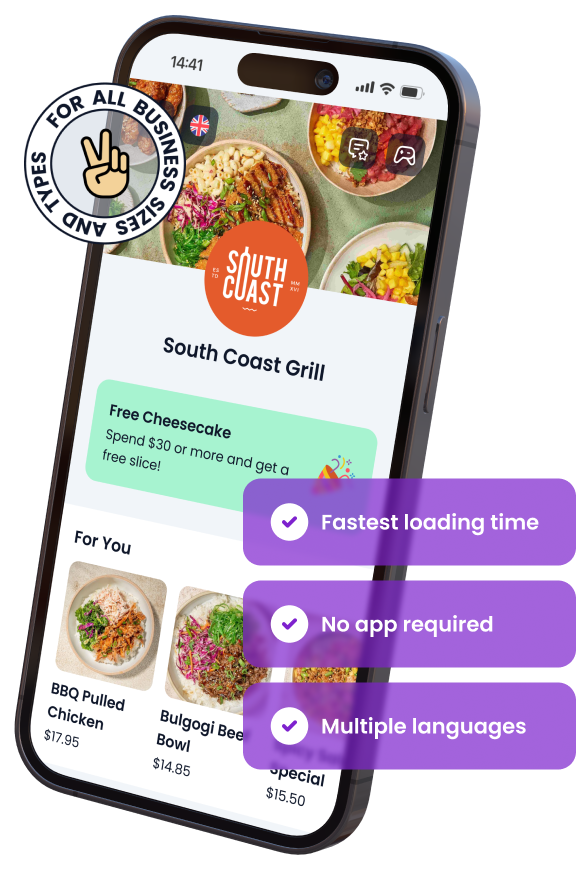
In This Article

Free AI Tools for Restaurants
TRY NOW ➜

Add allergen and dietary badges
Enhance your customers’ dining experience by providing clear dietary badges and labels for each menu item.



